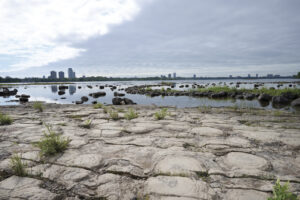At 85, Sylvia Earle could be forgiven for wanting to put her feet up. Instead, the superstar American ocean scientist is helping citizens around the world save the parts of the ocean they love the most.
“Sylvia’s wish is to see people stepping up in their area because that’s what it takes,” says Shannon Rake, manager of the Hope Spots program, part of Earle’s Mission Blue organization. “One person can’t do everything, but everyone can do one thing.”
So far, 130 sites have been designated as Hope Spots, including four in Canadian waters (see call-outs on map below). Local citizens nominate precious at-risk locations. If they qualify, Earle and her team help publicize each site’s biological and cultural importance, giving local communities the boost they need to better push governments to keep them safe. Earle, who still puts on her flippers and diving tank whenever possible, goes to as many of them as she can for an intimate undersea visit.
“I love the fact that Sylvia Earle is using her celebrity to flag places that need protection,” says Sabine Jessen, a former Canadian member of the Hope Spots council and executive director of the 5th International Marine Protected Areas Congress secretariat, which will hold its conference in Vancouver in June 2022.
Earle is far from done. Today, only about six per cent of the ocean has any form of protection, and just a third of that is tightly regulated. Earle’s goal, along with that of conservationists everywhere, is to bring that percentage to 30 by 2030, a movement known as 30×30. At that point, Earle will be 95 — and likely still leading the charge.
Learn more about Mission Blue and its Hope Spots program at mission-blue.org/hope-spots.





